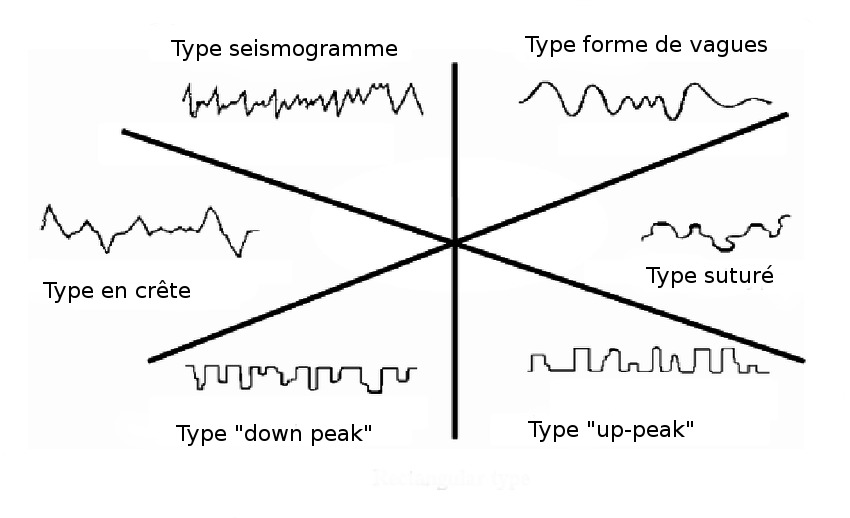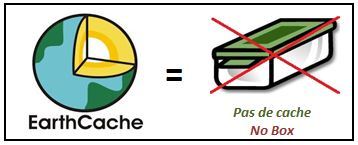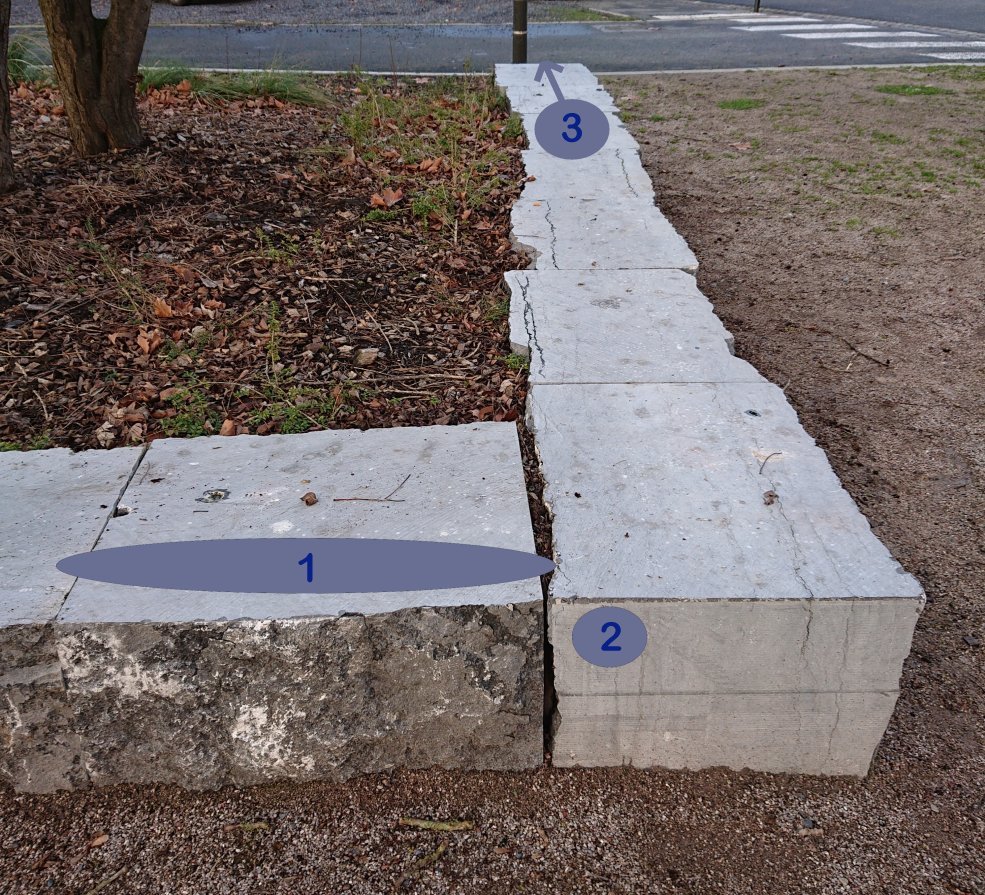

Les stylolithes
Définition
Le nom de stylolithe (ou stylolite) vient du grec "stylos", pilier et "lithos", pierre.
Ce sont des surfaces en dents de scie au cours de laquelle la matière minérale a été éliminée par dissolution sous pression, dans un procédé qui diminue le volume total de roche.
Les joints stylolithiques sont des discontinuités très irrégulières, hérissées de pointes (pics stylolithiques) plus ou moins aigues, et matérialisées par une accumulation de minéraux argileux, d'oxyhydroxydes de fer etc., au sein du joint. Ils ne sont bien développés que dans les calcaires. Ces joints sont généralement plus sombres que la roche.
Géométrie
La géométrie des joints stylolithiques a été définie par Park and Schot, et comporte six formes essentielles:
- forme simple ou primaire comme une vague
- forme suturée
- forme "up-peak" (rectangulaire)
- forme "down-peak" (rectangulaire)
- forme en crête (conique et pointue)
- forme de sismogramme

Relation avec le litage
Six types ont été définis. Trois simples et trois mixtes, on ne s'attardera que sur les trois premiers.
- stylolithes horizontaux: c'est le type le plus couramment observé. Ces stylolithes se produisent parallèlement ou presque parallèlement à la stratification des roches. Ce type est le plus souvent trouvé dans des roches sédimentaires stratifiées, principalement dans les roches carbonatées, qui n'ont pas été affectées par une activité tectonique structurelle ou métamorphique intense.
- stylolithes verticaux: ce type de stylolithe est lié à la stratification à angle droit. Il peut ou non être associé à une activité tectonique. Il est causé par une pression agissant perpendiculairement au litage.
- stylolithes inclinés: ce type est oblique à la stratigraphie. Il apparaît dans des roches qui sont à la fois affectées ou non affectées par l'activité tectonique, et peut également être trouvé dans les roches ignées et métamorphiques.
- il existe également 3 types mixtes (stylolithes inclinées horizontalement (vertical) transversales / stylolithes verticalement inclinées (horizontales) transversales et les stylolithes d'interconnexion du réseau)

Comment valider cette Earth Cache
Rappel concernant les "Earth Caches": il n'y a pas de contenant à rechercher, ni de logbook. Il suffit de se rendre sur les lieux, de répondre aux questions ci-dessous. Vous pouvez loger en "Found it" et envoyez-moi vos propositions de réponses, soit via mon profil, soit via la messagerie geocaching.com (Message Center), et je vous contacterai en cas de problème.

Localisation

Observez bien le stylolithe présent sur cette pierre calcaire (il y a deux lignes plus ou moins ondulées, parallèles entre elles.; intéressez vous à celle du dessus lorsque vous êtes dans l'allée).
- 1 : quelle est la (ou les) géométrie(s) de ce joint stylolithique (le style) ?
- 2 : de quel type de stylolithe s'agit-il (relation avec le litage) - justifiez votre réponse?
- 3 : deux formes sont en coupe sur les blocs, le premier, juste à côté du stylolithe que vous venez d'étudier, sur le côté vertical, et le second, complètement à l'opposé, côté rue; de quoi peut-il s'agir?
Une photo de vous ou d'un objet vous représentant (GPS, téléphone, TB personnel, etc.) est toujours la bienvenue!
Bonnes recherches et bon geocaching!

Stylolites
Definition
The name of stylolite (or stylolithe) comes from the Greek "stylos", pillar and "lithos", stone.
These are sawtooth surfaces during which the mineral material has been removed by dissolution under pressure, in a process that decreases the total volume of rock.
The stylolitic joints are very irregular discontinuities, bristling with spikes (stylolitic peaks) more or less acute, and materialized by an accumulation of clay minerals, iron oxyhydroxides, etc., within the joint. They are well developed only in limestones. These joints are usually darker than the rock.
Geometry
The geometry of the stylolitic joints has been defined by Park and Schot, and comprises six essential forms:
- simple or primary shape like a wave
- sutured form
- "up-peak" shape (rectangular)
- "down-peak" shape (rectangular)
- crest shape (conical and pointed)
- seismogram shape

Relationship with bedding
Six types have been defined. Three simple and three mixed, we will forget the last three!
- horizontal stylolites: this is the type most commonly observed. These Stylolites occur parallel to or almost parallel to the stratification rocks. This type is most often found in sedimentary rocks stratified, mainly in carbonate rocks, which were not affected by intense structural or metamorphic tectonic activity.
- vertical stylolites: this type of stylolite is related to the stratification at an angle law. It may or may not be associated with tectonic activity. It is caused by a pressure acting perpendicular to the bed.
- inclined stylolites: this type is oblique to stratigraphy. It appears in rocks that are both affected or unaffected by tectonic activity, and can also be found in igneous and metamorphic rocks.
- there are also 3 mixed types (horizontally inclined stylolites (vertical) transverse / vertically inclined (horizontal) stylolites transverse and network interconnection stylolites)

How to validate this Earth Cache
Reminder concerning "Earth Caches": there is no container to search, nor of logbook. Just go to the site, answer the questions below. below and send me the answers. You can log the Earth Cache before my return mail to your answers, I'll tell you if there is an error.

Localisation

Observe the stylolite present on this limestone (there are two more or less wavy lines, parallel to each other, and look for the one above when you are in the path).
- 1: what is the geometry (ies) of this stylolithic joint (the style)?
- 2: what type of stylolite is it (relationship with bedding) - justify your answer?
- 3: two forms are in section on the blocks, the first, just beside the stylolite you have just studied, on the vertical side, and the second, completely opposite, on the street side; what can it be?
A photo of you or an object representing you (GPS, phone, personal TB, etc.) is always welcome!
Good research and good geocaching!